Key takeaways
- French photography combines daily life and artistry, emphasizing emotional connections and storytelling.
- Key techniques such as natural light, the rule of thirds, and depth of field enhance photographic compositions and narratives.
- Building a photography portfolio requires a mix of personal style, emotional impact, and professional presentation to engage viewers.
- Developing a unique style involves experimentation, introspection, and an emotional connection to the subject matter.
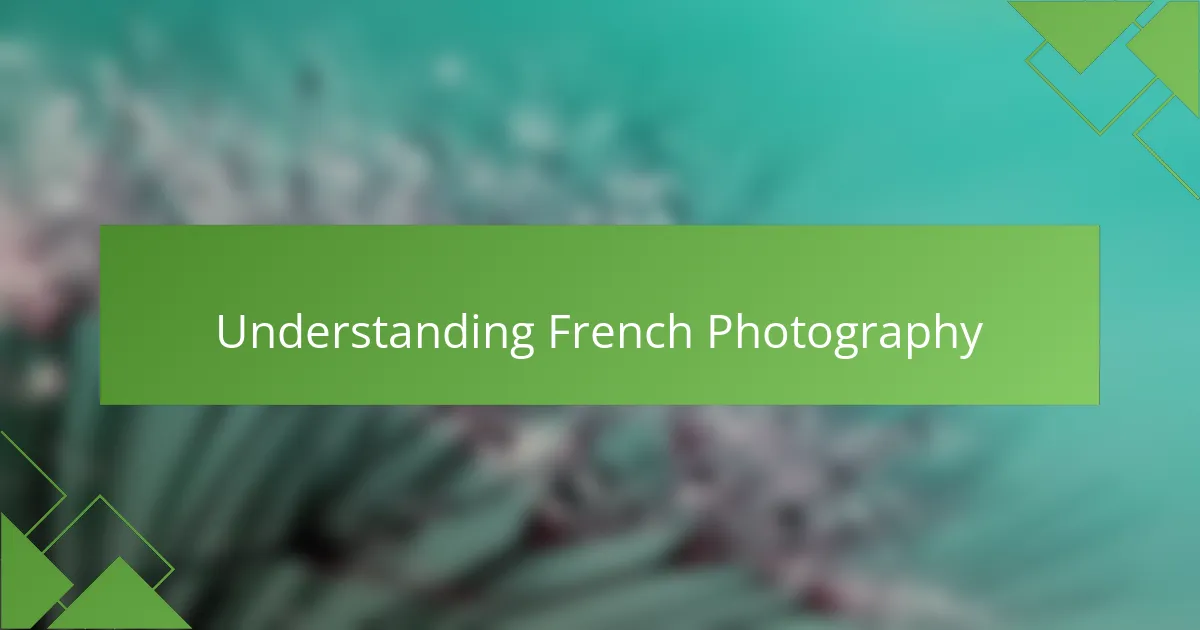
Understanding French Photography
French photography is steeped in a rich history that reflects the nation’s diverse culture and artistic evolution. I often marvel at how each photograph tells a story, capturing emotions that resonate universally. Have you ever found yourself lost in an image, feeling a connection to a moment in time that transcends language?
As I explore the works of renowned French photographers, I’m struck by their unique ability to blend elements of daily life with remarkable artistry. Each shot feels intentional and layered, inviting viewers to ponder not just what they see, but also the unseen narratives surrounding the moment. It reminds me of how a simple scene can evoke powerful memories or stir deep emotions within us.
When delving into various styles—from the raw, documentary realism of street photography to the dreamy aesthetics of fine art—I appreciate how these contrasts showcase the versatility of French photographers. They challenge me to see the world through different lenses, prompting me to ask: what stories could I tell through my own photographs? This exploration makes me realize that understanding French photography is not just about appreciating the art—it’s about connecting with the human experience.
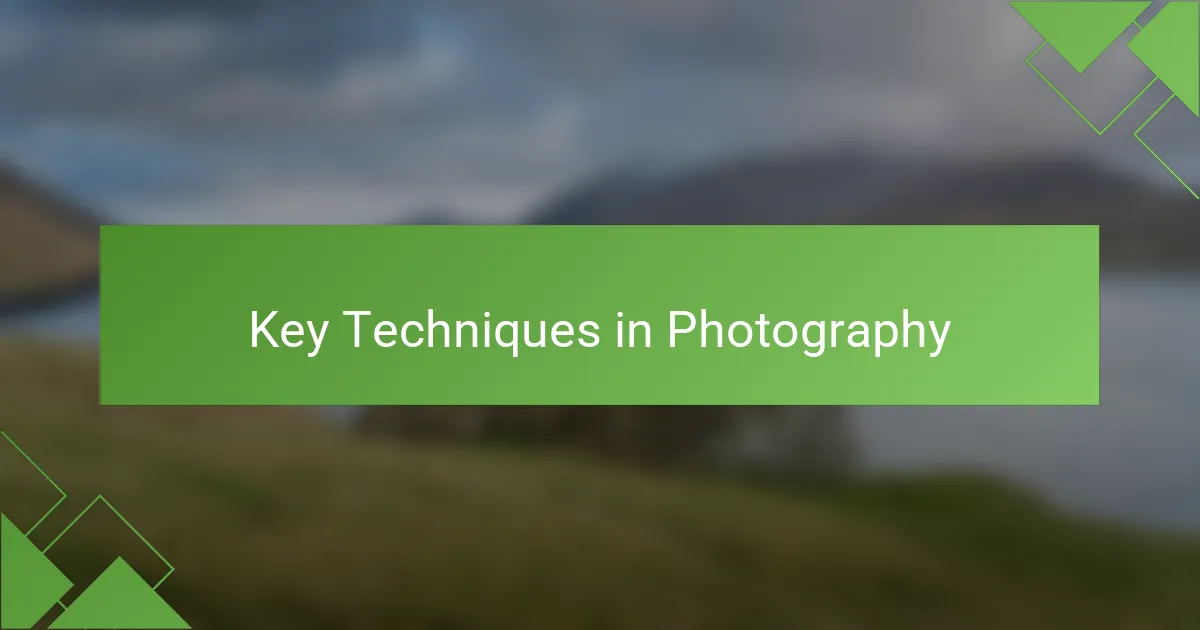
Key Techniques in Photography
Capturing moments, much like Eric Bouvet, requires a keen eye and an understanding of key techniques that elevate your photography. One of my go-to techniques is mastering natural light. I remember a time photographing a street musician at golden hour; the way the sunlight illuminated his face created depth and emotion. Another crucial element is the rule of thirds, which helps to balance your composition. By placing the subject off-center, I find that images resonate more with viewers, drawing their eyes into the frame.
Focusing on depth of field significantly shapes how a photograph conveys emotion. For instance, in a crowded market shot, blurring the background while keeping the subject sharp can tell a compelling story. Adjusting my aperture settings leads to varied visual storytelling, something I’ve personally explored in my travel photography. Each technique can create different feelings in the audience, reminding me of the powerful connection photography can build.
| Technique | Description |
|---|---|
| Natural Light | Utilizing sunlight for depth and emotion in photographs. |
| Rule of Thirds | Placing the subject off-center to create balance and interest. |
| Depth of Field | Adjusting aperture to control focus and background blur, enhancing storytelling. |
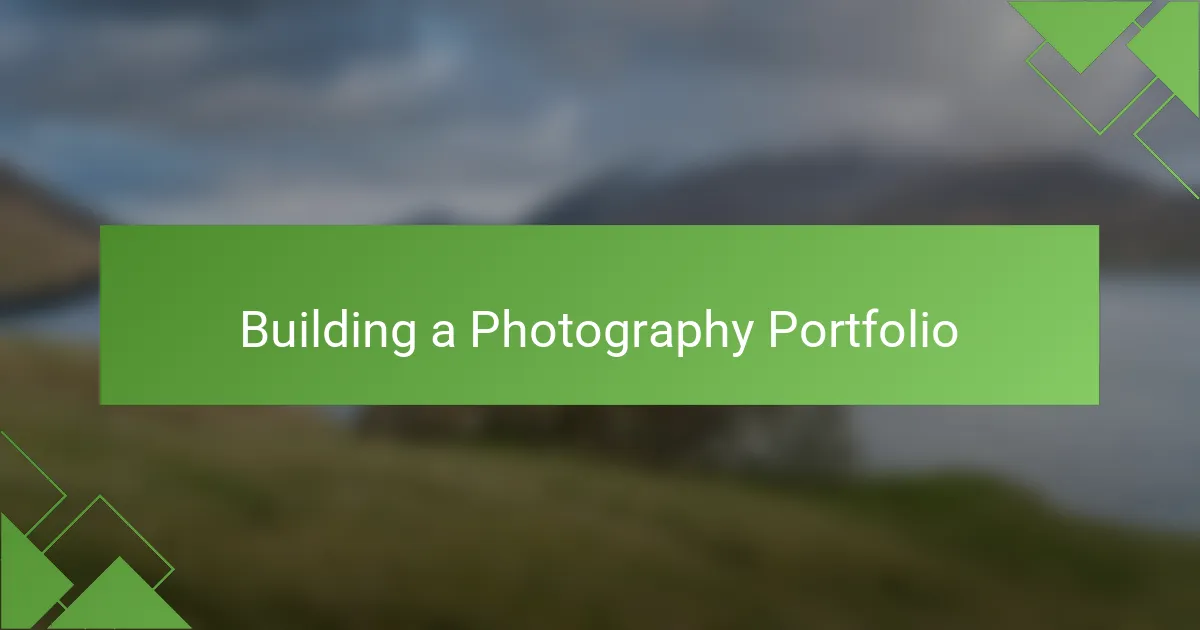
Building a Photography Portfolio
Building a photography portfolio is a critical step for any photographer aiming to showcase their work and attract clients. In my experience, selecting images that truly represent your unique style is essential. I remember the excitement I felt when I finally curated my first portfolio—each photograph told a story and captured moments that resonated with my personal vision.
I believe it’s important to present a mix of your best work while also conveying a consistent theme or mood. It’s not just about showcasing technically proficient images; it’s about evoking emotion and connecting with the viewer. This is something I learned while studying renowned photographers like Eric Bouvet, who masterfully captured raw moments that speak volumes.
Here’s a comparison table that outlines key elements to consider when building your photography portfolio:
| Element | Importance |
|---|---|
| Image Selection | Choose photos that represent your style and evoke emotion. |
| Consistency | Maintain a cohesive theme to connect with your audience. |
| Storytelling | Each photo should tell a story, creating a narrative throughout the portfolio. |
| Professional Presentation | Present your work in a clean, polished format that enhances your images. |
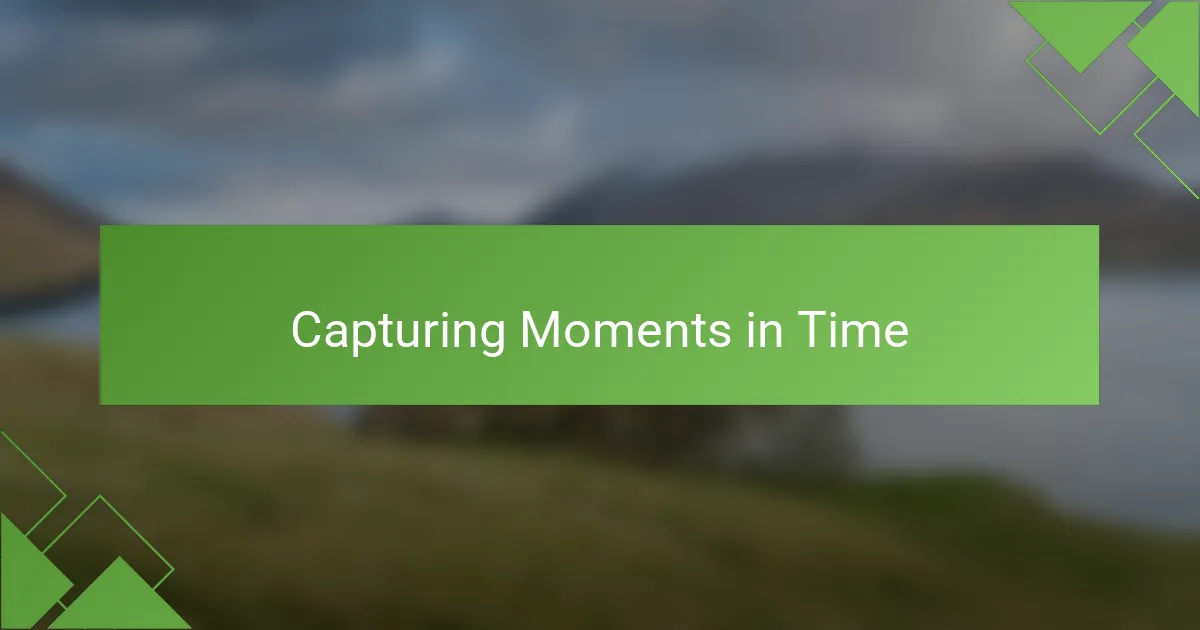
Capturing Moments in Time
Capturing moments in time is about more than just taking photographs; it’s about telling a story. I remember my first time witnessing a spontaneous street performance. I felt the energy of the crowd and the passion of the performers. I quickly raised my camera and snapped the moment. The thrill of that captured emotion still resonates with me. It’s these fleeting instances that mirror the work of photographers like Eric Bouvet, who specializes in documenting raw human emotions.
It’s fascinating how different photographers approach this art. For instance, Eric Bouvet often emphasizes the narrative in his images, while I tend to focus on the emotions of the moment. The essence of capturing moments in time lies in observation and timing, which can transform ordinary events into unforgettable memories.
| Eric Bouvet’s Style | My Approach |
|---|---|
| Focuses on narrative storytelling through images | Emphasizes raw emotions and spontaneity |
| Often shoots in high-pressure situations like conflicts | Captures moments in everyday life with a personal touch |
| Uses a documentary style to evoke strong feelings | Uses candid photography to reflect the authenticity of experiences |
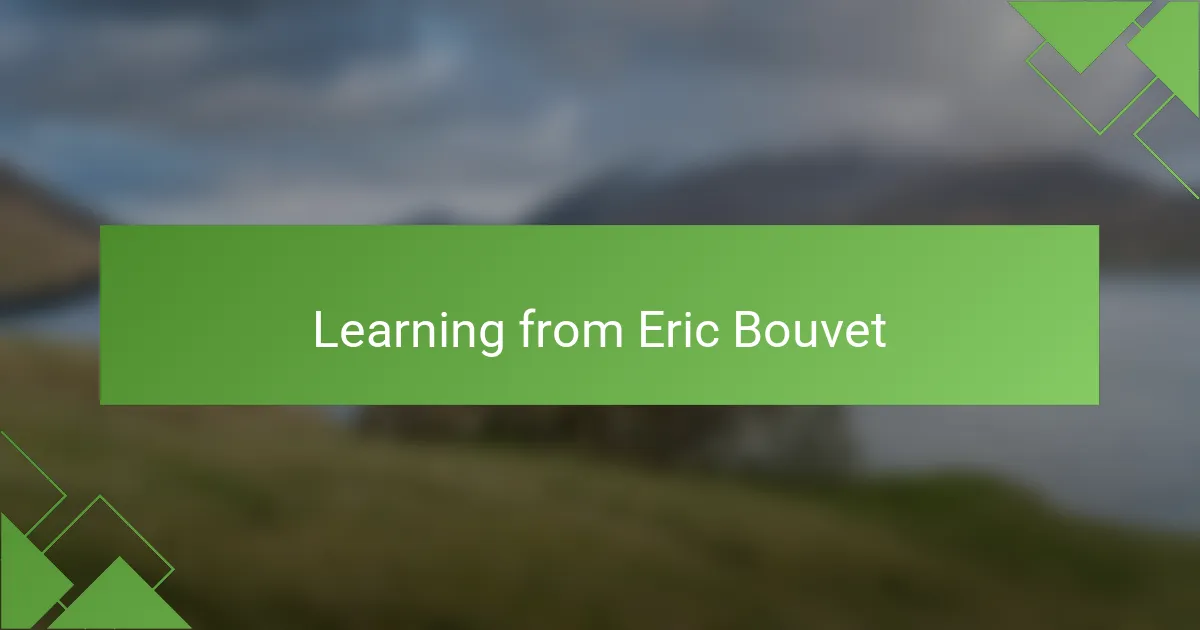
Learning from Eric Bouvet
Learning from Eric Bouvet has been an enlightening experience. His ability to capture the raw emotion of fleeting moments resonates deeply with me. I remember poring over his compelling images and feeling a mix of awe and a desire to convey similar depth in my work. Each shot tells a story, conveying the weight of the moment, and that’s what I strive for during my own shoots.
Here are a few key takeaways that I’ve implemented from studying his style:
-
Emphasize Emotion: Focus on the emotion in a scene. I try to be patient and let the moment unfold before capturing it, similar to Bouvet’s approach.
-
Be Observant: Look for small details that can tell a larger story. I often find myself noticing subtle expressions or interactions that reveal deeper narratives.
-
Use Natural Light: Bouvet often utilizes natural lighting to enhance the mood. I’ve started to rely more on it, as it adds a genuine feel to my photographs.
-
Engage with Subjects: Building rapport with subjects helps to evoke authentic reactions. I’ve found that spending time with them really pays off in the final image.
-
Be Prepared for the Unexpected: Sometimes the best moments are unplanned. I’ve learned to keep my camera ready and be open to capturing unique scenarios, just as Bouvet does in his adventurous projects.

Developing Your Own Style
When it comes to developing your own style in photography, it often starts with experimenting. I remember the early days when I would shoot anything and everything just to see how my lens magnified the world around me. Over time, I realized that finding my unique voice required not just practice, but also introspection about what resonates with me.
Creating a signature style means embracing what speaks to your soul. I often reflect on the feelings certain images evoke in me. This emotional connection can guide the direction of your work, ensuring that every shot tells a story that only you can narrate. Like Eric Bouvet, you want your photographs to not just capture a moment, but to encapsulate an experience.
Here’s a quick comparison between my developing process and Eric Bouvet’s renowned approach:
| Aspect | My Approach | Eric Bouvet’s Approach |
|---|---|---|
| Subject Matter | Personal exploration, daily life | Global conflicts, humanitarian issues |
| Emotional Impact | Introspection, connection to surroundings | Documentary storytelling, urgency |
| Technique | Experimentation, natural light | Controlled environments, strategic framing |

Showcasing Your Work Online
Showcasing your work online is an exciting opportunity to connect with potential clients and fellow photographers alike. I’ve discovered that selecting a user-friendly platform is essential; having my work displayed in a clean, organized manner can make all the difference. I recall the satisfaction I felt after revamping my website—suddenly, my photos were highlighted without distractions, inviting visitors to engage with each image on a deeper level.
As I curate my online portfolio, I always aim to strike a balance between variety and cohesion. I believe this mix showcases my growth while still reflecting my style. Have you ever visited a site where the images seem disjointed? It can leave you feeling confused, and I strive to avoid that with my own presentation. Telling a consistent story through my work not only makes it more engaging but also creates a memorable experience for viewers.
Incorporating engaging descriptions or stories with each photograph can elevate your online presence. I’ve found that sharing the context behind specific shots—like the time I captured a quiet moment in a bustling café—adds layers to the viewer’s experience. Connecting the emotional journey behind my images fosters a deeper relationship with my audience, encouraging them to return and explore more of what I have to offer.